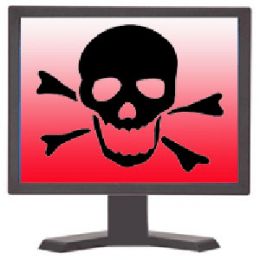Stuxnet
Different variants of Stuxnet targeted five Iranian organizations, with the probable target widely suspected to be uranium enrichment infrastructure in Iran; Symantec noted in August 2010 that 60% of the infected computers worldwide were in Iran. Siemens stated on 29 November that the worm has not caused any damage to its customers, but the Iran nuclear program, which uses embargoed Siemens equipment procured secretly, has been damaged by Stuxnet. Kaspersky Lab concluded that the sophisticated attack could only have been conducted "with nation-state support".
Control system security Main article: Control system security Prevention of control system security incidents,[45] such as from viral infections like Stuxnet, is a topic that is being addressed in both the public and the private sector.
The fact that John Bumgarner, a former intelligence officer and member of the United States Cyber-Consequences Unit ([US-CCU), published an article prior to Stuxnet being discovered or deciphered, that outlined a strategic cyberstrike on centrifuges[106] and suggests that cyber attacks are permissible against nation states which are operating uranium enrichment programs that violate international treaties gives some credibility to these claims.
Jerusalem – 1987
Morris (a.k.a. Internet Worm) – November 1988
Solar Sunrise – 1998
US government took the incident as another golden opportunity to blame Iraqis but soon found out that the culprits were no other than their own Americans.It was later revealed that the incidents represented the work of two American teenagers from California.
- Melissa – 1999
It can mass-mail itself from e-mail client Microsoft Outlook 97 or Outlook 98.???? If a Word document containing the virus, either LIST.DOC or another infected file, is downloaded and opened, then the macro in the document runs and attempts to mass mail itself.
The Melissa virus, also known as "Mailissa", "Simpsons", "Kwyjibo", or "Kwejeebo", is a mass-mailing macro virus.
When the macro mass-mails, it collects the first 50 entries from the alias list or address book and sends itself to the e-mail addresses in those entries.
I Love You – May 2000
The Code Red worm – July 2001
"Code Red" worm because Code Red Mountain Dew was what they were drinking at the time, and because of the phrase "Hacked by Chinese!" with which the worm defaced websites. Although the worm had been released on July 13, the largest group of infected computers was seen on July 19, 2001.
Nimda – 2001
Nimda is a computer worm, and is also a file infector. Multiple propagation vectors allowed Nimda to become the Internets most widespread virus/worm within 22 minutes.
Downadup – 2009
Discovery The first variant of Conficker, discovered in early November 2008, propagated through the Internet by exploiting a vulnerability in a network service (MS08-067) on Windows 2000, Windows XP, Windows Vista, Windows Server 2003, Windows Server 2008, and Windows Server 2008 R2 Beta.While Windows 7 may have been affected by this vulnerability, the Windows 7 Beta was not publicly available until January 2009.
The Conficker infected millions of computers including government, business and home computers in over 200 countries, making it the largest known computer worm infection since the 2003 Welchia. Prevalence Recent estimates of the number of infected computers have been notably difficult because the virus has changed its propagation and update strategy from version to version.
The virus' unknown authors are also believed to be tracking anti-malware efforts from network operators and law enforcement and have regularly released new variants to close the virus' own vulnerabilities.
 If you enjoyed this post and wish to be informed whenever a new post is published, then make sure you subscribe to my regular Email Updates.
Subscribe Now!
If you enjoyed this post and wish to be informed whenever a new post is published, then make sure you subscribe to my regular Email Updates.
Subscribe Now!
.png)

0 comments: